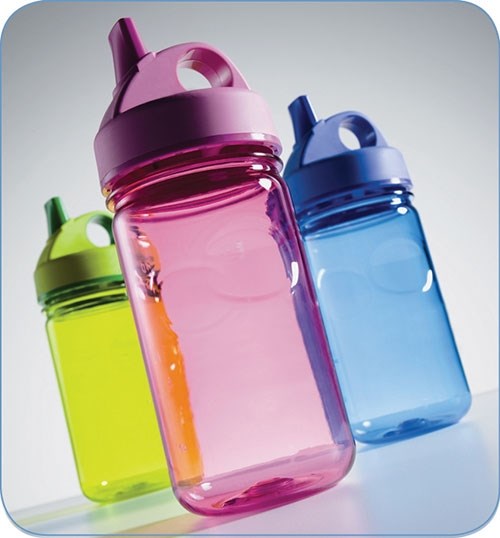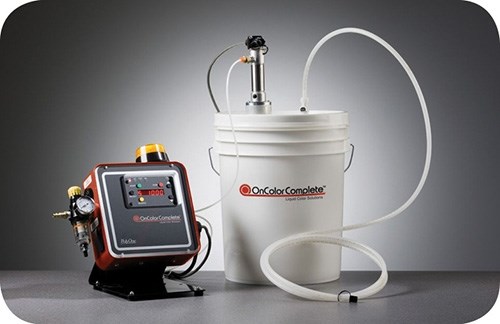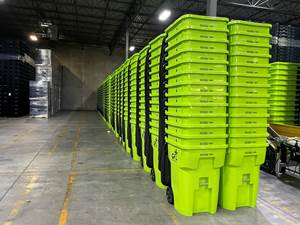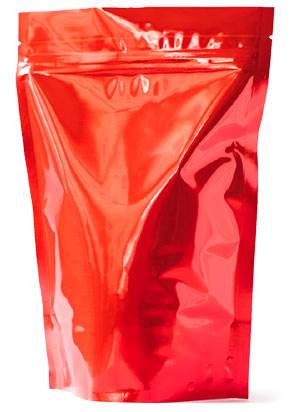Time for a New Look at Liquid Color?
Liquid colorants are growing more popular with processors looking for a competitive advantage. Though perhaps not for everyone, they can offer more economical letdown ratios and work especially well with heat-sensitive materials.
Gaining a competitive advantage has always been top-of-mind for plastics processors, and interest in one such solution has recently spiked. A growing number of processors are considering liquid colorants to take advantage of their potential to improve overall production efficiencies while reducing the total coloring cost.
Liquid color has seen its popularity rise before. So what is the reality behind the claims for this type of product? Are liquid color concentrates really a silver bullet that offers all upside with no drawbacks? Is liquid color the right solution for every application?
First, let’s define our subject: Liquid color concentrates are free flowing pre-dispersions of pigments in carriers that are compatible with the base resin being processed. They are most commonly produced using one of two methods.
The first and simplest method involves mixing base pigments in a liquid carrier with a high-speed mixer (think of a kitchen blender on steroids) to achieve the desired color. Additives are often used to minimize the tendency of the pigment to settle out of suspension. The suspension may also require agitation just prior to use to ensure good color consistency in production.
The second method involves milling or breaking down the pigments to very fine particles (think of a high-tech mortar and pestle), then dispersing the color into the liquid carrier. This method is recommended when working with organic colorants and achieves the best color dispersion possible while increasing shelf stability.
The use of liquid color concentrate requires equipment to meter and pump the material from its storage container into the process to be mixed with the resin material. There are various ways to accomplish this, ranging from simple volumetric systems using peristaltic pumps to more sophisticated and highly accurate gravimetric (loss-in-weight) systems employing computer-controlled metering. Whatever method is used, it is important to note that liquid color will require additional equipment to deploy the liquid into your system.
WHY GO LIQUID?
No matter which type of production method is used to make them, liquid color concentrates offer several advantages over other coloring options. Because of the physical properties of a liquid, it can be metered much more accurately than a pelletized or powdered mixture. This advantage means that liquid colorants can be dosed very effectively and consistently, which provides excellent color consistency in the end product. The liquid also lends itself to dispersion within the base polymer more effectively than other forms of color. This enables a processor to achieve excellent color dispersion throughout their finished product.
The ability to more highly load liquid concentrates with color than their solid counterparts means that less colorant can be used to achieve comparable results. This translates into higher letdown ratios for a given application and can provide a processor with great efficiencies in the coloring operation.
Also, the fact that liquid does not require melting prior to mixing with the resin is especially advantageous when working with heat-sensitive materials.
But not all is rosy with using liquid color concentrates. There are some real issues to consider before using them in your operation. In some applications, for example, the liquid carrier may bloom to the surface if not completely compatible with the base resin. Also, in certain high-speed processes, a phenomenon known as screw slippage may be exhibited. This can become especially significant in applications using the liquid at letdown ratios in excess of 2%.
Inventory management and quality control also become paramount for using liquid color effectively. As mentioned earlier, the potential exists for the pigments to fall out of suspension. This can lead to inconsistent coloring, and sometimes aged liquid concentrate needs to be scrapped. It is critical to work with your supplier to understand the colorant’s shelf life and develop procedures like rotating your stock and using a First-In/First-Out inventory strategy to ensure that liquid colorants are being used efficiently and properly mixed prior to use.
In addition to potential processing issues, liquid color can provide handling, housekeeping, and disposal challenges. Just like that can of paint you buy at the local hardware store, there is almost always residual colorant left in the container that most metering equipment is unable to extract. Depending on the equipment being used, this residual material, or “heel,” can represent up to 10% of the total volume of color. Obviously there is a huge potential for wasted material.
Many processors develop methods to extract as much of this material as possible. These methods often involve tediously combining unused colorant with fresh containers of material. This can expend a tremendous amount of labor on an unproductive activity. Because it can involve physically lifting bulky and awkward containers, it also can become a significant workplace safety issue.
And just like with those cans of paint you use at home, it seems as though unwanted drops of material escape, no matter how careful you are. Unlike pelletized material, if there is a spill or leak, it will spread. Keeping up with the spills, leaks, and drips has potential to become an ongoing housekeeping issue.
Finally, with today’s increased regulatory environment, disposal of spent containers can become an expensive proposition. Depending upon the local jurisdiction of your plant, liquid colorant can be considered hazardous material with all of the associated additional costs to dispose of it in a lawful manner. Even if the colorant is not considered hazardous, many waste haulers will not handle it, or do so only for an additional cost.
IS LIQUID FOR YOU?
The answer, like most decisions you make for your operation, depends on a number of factors. Liquid color can be a powerful tool for improving production efficiencies and maintaining quality. It has helped processors to hone their competitive edge. To find out if it makes sense for you, weigh the benefits against the requirements for implementing this technology and consult with your colorant supplier for more information.
Related Content
Injection Molder Changes Up Color Changes
An injection molder of trash cans, pallets, totes and other plus-size components, Rehrig Pacific’s machine fleet is composed of larger tonnage presses whose size makes material changes at the feed throat a potentially dizzying exercise.
Read MoreReduce Downtime and Scrap in the Blown Film Industry
The blown film sector now benefits from a tailored solution developed by Chem-Trend to preserve integrity of the bubble.
Read MoreTosaf’s Investments in North America Result in 40% Increase in Production Capacity
Backed by a global presence, Tosaf provides localized additive and color solutions, and services for the plastic industry in North America.
Read MoreAdditive Masterbatches for Monomaterial PE Film Applications
Ampacet’s Biax4CE portfolio of additives and white color concentrates designed for MDO-PE and BOPE applications.
Read MoreRead Next
‘Lean’ Molding & Liquid Color: A Good Fit
If you want to take up parasailing, it’s probably best that you have no fear of heights.
Read MoreBeyond Prototypes: 8 Ways the Plastics Industry Is Using 3D Printing
Plastics processors are finding applications for 3D printing around the plant and across the supply chain. Here are 8 examples to look for at NPE2024.
Read MoreMaking the Circular Economy a Reality
Driven by brand owner demands and new worldwide legislation, the entire supply chain is working toward the shift to circularity, with some evidence the circular economy has already begun.
Read More

































